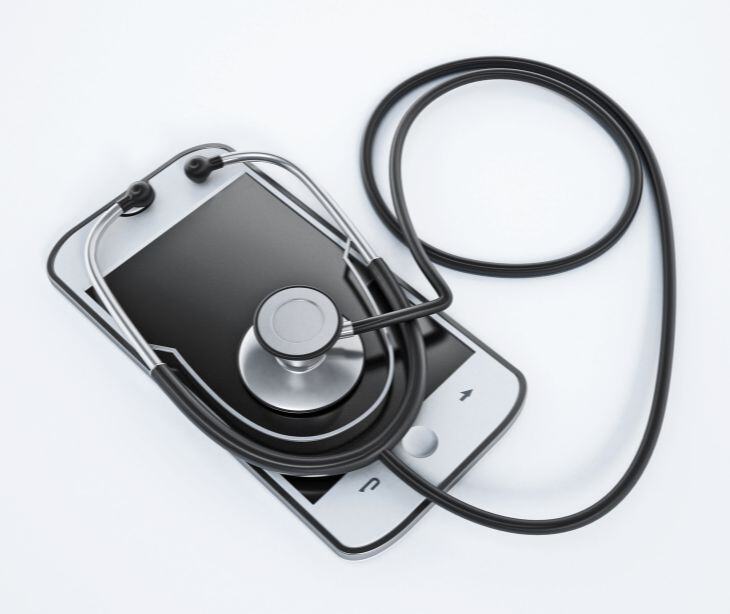
Physicians and other providers rely on text messaging to efficiently coordinate care, share updates, and stay connected with patients.
Transmitting electronically protected health information (ePHI) through traditional SMS channels raises concerns about privacy, security, and regulatory compliance. As the Health Insurance Portability and Accountability Act (HIPAA) continues to change, healthcare organizations must stay vigilant in ensuring their texting practices adhere to the latest regulations and guidelines. Organizations should consider how secure the texting app is and if it meets other HIPAA requirements.
Understanding the risks of unsecured texting
Traditional SMS messaging inherently lacks the security measures necessary to safeguard ePHI. Text messages can be easily intercepted, forwarded to unintended recipients, and stored indefinitely on telecommunication providers' servers. Additionally, senders cannot reliably authenticate the recipient’s identity, leading to the potential for messages being sent to the wrong person. Studies have shown that 38% of people who text have inadvertently sent a message to the wrong individual. These vulnerabilities put healthcare organizations at risk of costly HIPAA violations, which can result in fines of up to $50,000 for a single infraction and escalate to $1.5 million in a single year for repeated offenses. Beyond the financial implications, the reputational damage and loss of patient trust can be difficult for any healthcare provider.
Navigating HIPAA
The Health Insurance Portability and Accountability Act (HIPAA) has continuously adapted to address the growing use of digital technologies in healthcare. While earlier iterations of the law focused on traditional communication methods, such as fax and email, the increasing prevalence of mobile devices and text messaging has necessitated a more detailed approach.
Read more: What is HIPAA?
Exploring HIPAA compliant texting solutions
When selecting a HIPAA compliant texting service, healthcare organizations should focus on the provider's security features, user-friendly interface, and alignment with HIPAA regulations. Considerations include encryption, two-factor authentication, secure message delivery, and the capability to remotely wipe devices in case of loss or theft. Additionally, providers should offer training and support to facilitate seamless integration into existing workflows.
Fortunately, secure texting solutions like Paubox are available to help healthcare providers with the limitations of traditional SMS messaging while ensuring HIPAA compliance.
Integrating secure texting into healthcare workflows
Successful HIPAA compliant texting implementation requires seamless integration within the healthcare organization's existing workflows. Providers should strive to make the secure texting platform intuitive and user-friendly, minimizing the learning curve for staff and encouraging widespread adoption. Streamlining communication processes empowers healthcare teams to collaborate effectively. A study by Goshen Health found that secure messaging platforms led to improved care coordination and enhanced patient satisfaction, demonstrating the benefits of efficient communication in healthcare settings. As a result, HIPAA compliant texting can enhance patient care, improve operational efficiency, and foster a culture of compliance.
Related: Using HIPAA compliant text messaging to increase patient self-efficacy
Addressing the challenges of secure texting adoption
Despite the clear benefits of HIPAA compliant texting, healthcare organizations may face various challenges in driving widespread adoption. Resistance to change, concerns about user experience, and the perceived complexity of secure texting platforms can hinder implementation. To overcome these obstacles, healthcare leaders must prioritize change management, provide training, and continuously solicit feedback from end-users to refine the secure texting solution and address their pain points.
Paubox’s solution
At Paubox, we recognize the necessity of secure communication in healthcare, which is why we’ve developed a HIPAA compliant texting solution that makes it easier for providers to connect with their patients. Our service eliminates the need for third-party apps or logins, allowing patients to receive secure, encrypted text messages directly on their phones. This approach improves patient engagement, ensuring they stay informed about appointments, test results, and other important updates, while also reducing no-show rates and enhancing overall care coordination.
We’ve built our texting solution to work across both iPhone and Android devices, ensuring broad accessibility. Our focus is on maintaining the highest standards of privacy and security, applying the same encryption methods that power our email services. With Paubox Texting, healthcare providers can confidently manage their communication needs, knowing that all messages comply with HIPAA regulations, and safeguarding patient information without the risk of data breaches.
Learn more: The guide to HIPAA compliant text messaging
FAQs
What makes a text HIPAA compliant?
An email is HIPAA compliant if it includes encryption, secure access controls, and audit trails. So, providers must use a HIPAA compliant texting platform, like Paubox, to protect patients’ PHI.
Is WhatsApp HIPAA compliant?
Even though all messages are encrypted, WhatsApp is not HIPAA compliant because it lacks other capabilities covered entities and business associates need to comply with the HIPAA Security Rule.
What features make a texting platform HIPAA compliant?
- Encryption to protect data during transmission
- Secure user authentication to verify the identity of users
- Access controls to ensure only authorized individuals can access PHI
- Audit logs to track and record all communications involving PHI
- Data backup and disaster recovery plans
- Business associate agreement (BAA) between the platform provider and healthcare entity
Subscribe to Paubox Weekly
Every Friday we'll bring you the most important news from Paubox. Our aim is to make you smarter, faster.



